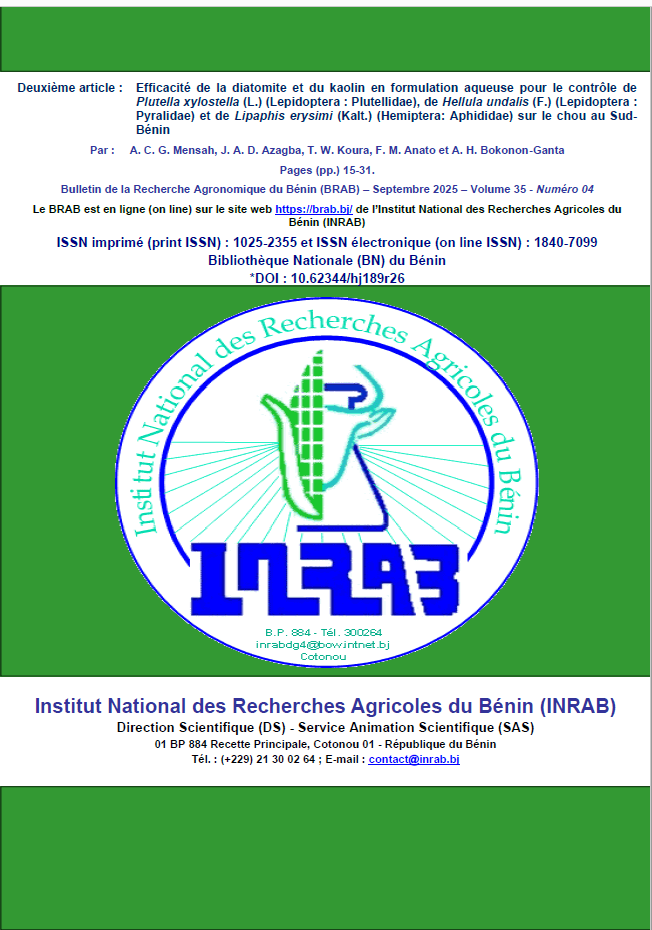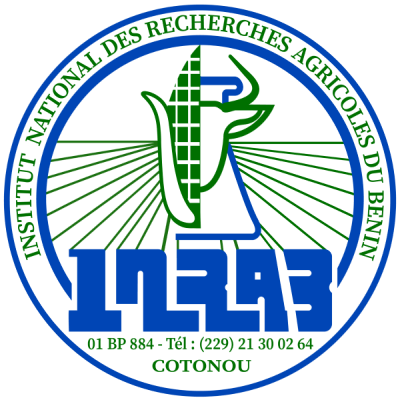Efficacy of diatomite and kaolin in aqueous formulation for the control of Plutella xylostella (L.) (Lepidoptera: Plutellidae), Hellula undalis (F.) (Lepidoptera: Pyralidae) and Lipaphis erysimi (Kalt.) (Hemiptera: Aphididae) on cabbage in Southern Bénin
DOI:
https://doi.org/10.62344/hj189r26Keywords:
Brassica oleracea, pests, diatomaceous earth, kaoliniteAbstract
Cabbage production in South-Benin is limited. by insect pests, whose damage can result in total crop loss. Furthermore, the chemical pesticides used by producers to control these pests are not without danger to humans and the environment. This study was conducted to reduce the misuse of these chemical pesticides and offer sustainable alternatives to market gardeners. The objective is to evaluate the effect of diatomite and kaolin on the main pests and the productivity of cabbage. Two doses and two application frequencies were tested for diatomite and kaolin on the population dynamics of H. undalis and P. xylostella caterpillars and cabbage productivity. The experimental design used was a completely randomized block design with four replicates and ten treatments, including two controls (absolute and relative). The results showed that regardless of the dose and frequency of application, diatomite and kaolin significantly reduced (P = 0.000) the population of P. xylostella and H. undalis and significantly improved cabbage yield (P = 0.0015). A reduction in yield losses of 50 to 80% was recorded with weekly application of the materials. However, neither material was able to control infestation by L. erysimi. This study shows that weekly application of diatomite and kaolin made it possible to better control the two main caterpillars that attack cabbage crops and to reduce cabbage yield losses by more than half in southern Benin.

Published
Issue
Section
License
Copyright (c) 2025 Bulletin de la Recherche Agronomique du Bénin

This work is licensed under a Creative Commons Attribution-NoDerivatives 4.0 International License.
Les articles publiés par le Bulletin de la Recherche Agronomique du Bénin sont en libre accès. Ils sont gratuits pour tout le monde, immédiatement téléchargeables dès la publication et distribués sous la licence CC BY-NC-ND (https://creativecommons.org/licenses/by-nc-nd/4.0/).







